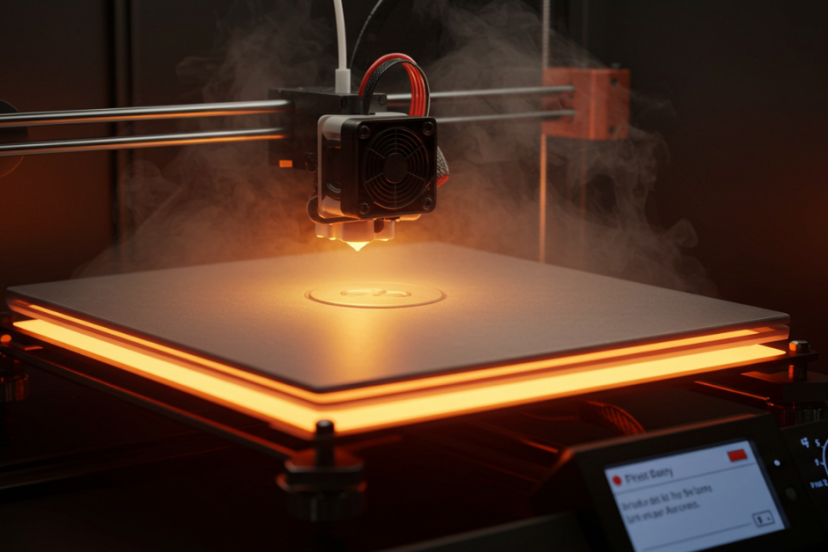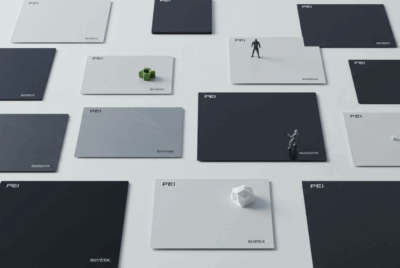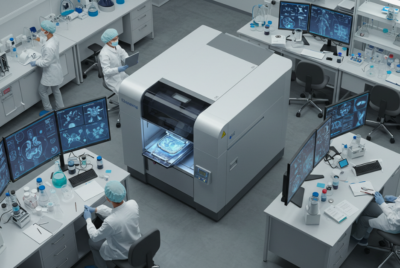Top 10 Heated Build Plates for 3D Printers in 2024: A Comprehensive Review
Are you tired of your prints warping or popping off the bed? If so, it might be time to level up your 3D printing game with a heated build plate. In this comprehensive review, we’re diving into the world of heated build plates to find out which ones are the best for 2024. Whether you’re a hobbyist or a professional, you’ll find something here to improve your prints!
What Are Heated Build Plates?
Let’s start with the basics. A heated build plate is the flat surface on your 3D printer where the magic happens. Unlike non-heated plates, these bad boys heat up to provide better adhesion for your prints, especially when working with tricky filaments like ABS and PETG.
Why Heated Build Plates Matter
Why bother with heated build plates? Well, without them, you’re more likely to experience warping, poor adhesion, and overall frustration. Think of it like trying to glue something to a cold surface—it just doesn’t stick as well! Heated build plates solve this problem by keeping the bottom layer warm, ensuring a solid foundation for your print.
Top 10 Heated Build Plates for 3D Printers in 2024
Now, let’s dive into the main event—the top 10 heated build plates you should consider for 2024. Each of these plates has been chosen based on user reviews, performance, and overall value.
- Creality Ender 3 Glass Heated Bed
This glass heated bed is known for its smooth finish and exceptional adhesion. Ideal for beginners and those looking to upgrade their Ender 3.
- Prusa MK52 Heated Bed
Prusa’s heated bed is a favorite in the 3D printing community. Its magnetic surface allows easy removal of prints, and it’s compatible with multiple filaments.
- Anycubic Ultrabase Heated Bed
The Ultrabase by Anycubic offers a unique surface that grips your prints when hot and releases them easily once cooled. It’s a perfect fit for PETG.
- LulzBot PEI Heated Bed
This PEI-coated heated bed delivers fantastic adhesion and is incredibly durable, making it a go-to for heavy-duty users.
- Creality CR-10S Pro Heated Bed
The CR-10S Pro’s large heated bed makes it ideal for big projects. Plus, it comes with a flexible magnetic surface for easy print removal.
- Artillery Sidewinder X1 Heated Bed
With a generous build surface, the Sidewinder X1’s heated bed is great for large-format prints and consistent heating across the entire plate.
- Voron V2 Heated Bed
Designed for precision and quality, the Voron V2 heated bed excels in providing even heating and preventing warping on high-precision prints.
- BIQU SSS Heated Bed
This spring steel heated bed offers excellent adhesion for both PLA and ABS filaments and is easy to maintain.
- Snapmaker Heated Bed
Snapmaker’s heated bed is not only known for its high quality but also for its flexibility. It’s ideal for makers who use multi-functional printers.
- Wham Bam Systems Flexi Heated Bed
This modular system allows for easy removal of prints and even heating, making it a top choice for advanced users.
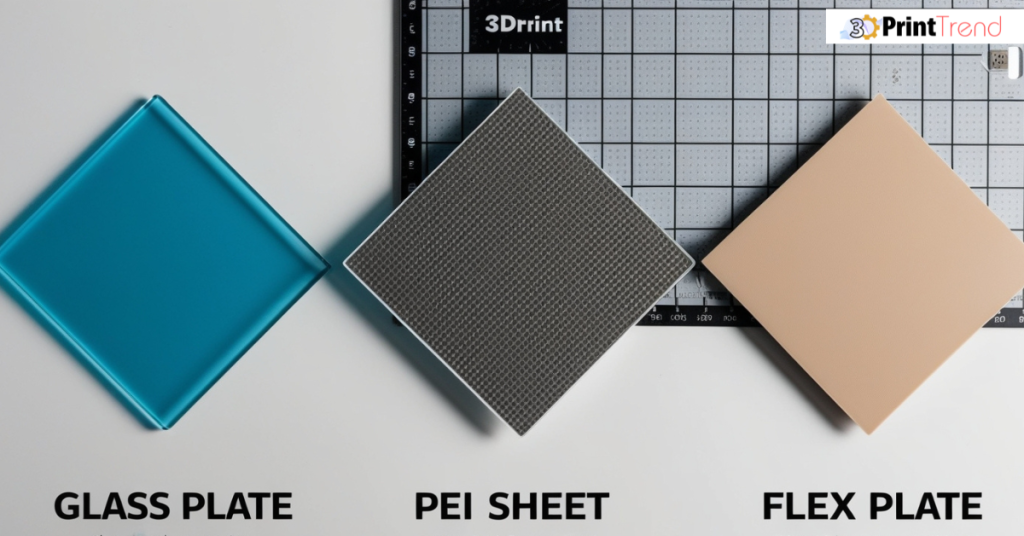
Factors to Consider When Choosing a Heated Build Plate
Choosing the right heated build plate can feel overwhelming. Here are some things you should consider:
- Material: Glass, aluminum, or PEI-coated?
- Size: Does the build plate fit your printer?
- Temperature Range: Can it handle high-temp filaments like ABS or nylon?
- Removability: Do you need a flexible plate for easy print removal?
Best Heated Build Plates for ABS & PETG
When printing with ABS or PETG, a good heated bed is crucial. Materials like these are notorious for warping without consistent heat, so here’s a closer look at the best heated beds for these filaments.
Creality Ender 3 Glass Heated Bed
Its smooth glass surface makes it ideal for ABS and PETG, providing excellent adhesion and reducing warping.
Prusa MK52 Heated Bed
Compatible with both ABS and PETG, this bed’s versatility is unmatched, making it one of the best choices for printing with temperature-sensitive materials.
Installation Tips for Heated Build Plates
Setting up a heated build plate isn’t rocket science, but there are a few things you should keep in mind:
- Check the Voltage: Ensure your printer’s power supply can handle the heated plate.\
- Level the Bed: Proper bed leveling is key to avoiding print issues.
- Secure the Wiring: Keep your wiring neat and secure to prevent overheating.
How to Maximize Print Quality with Heated Build Plates
Want to take your prints to the next level? Here’s how you can maximize the benefits of your heated build plate:
- Optimize the Temperature: Each filament type requires a specific bed temperature. Get it right!
- Use Adhesion Aids: For tricky filaments, use glues or build plate adhesives.
- Preheat the Plate: Give the bed enough time to reach the optimal temperature before starting your print.
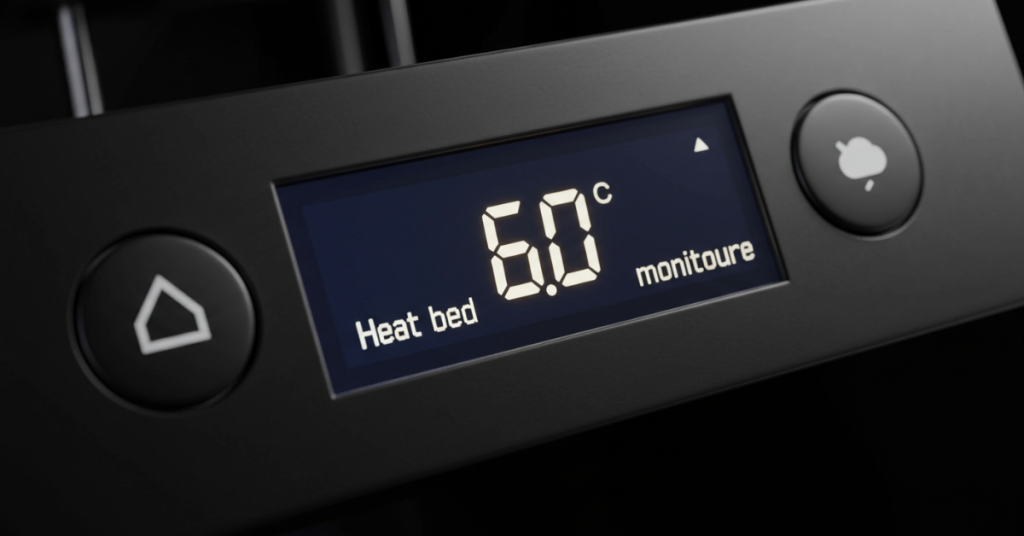
Maintaining Your Heated Build Plate
Like any tool, your heated build plate needs some TLC. Here’s how to keep it in tip-top shape:
- Clean Regularly: Use isopropyl alcohol to clean the surface and prevent buildup.
- Avoid Scratching: Be gentle when removing prints to avoid damaging the surface.
- Inspect Wiring: Ensure that the wires are secure and free from wear and tear.
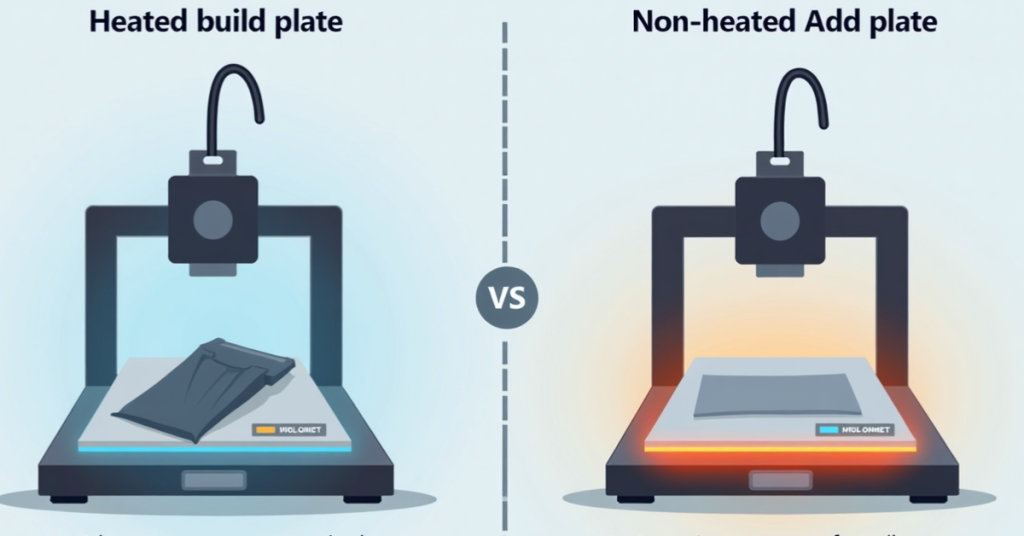
Heated Build Plates vs. Non-Heated Plates
So, do you really need a heated build plate? The answer is probably yes if you’re serious about your prints. Heated plates provide better adhesion, reduce warping, and are essential for printing with materials like ABS and PETG.
Advanced Techniques Using Heated Build Plates
For those who like to experiment, heated build plates offer a whole new world of possibilities. Try printing with high-temp filaments or even using dual extruders for multi-material prints.
Common Problems with Heated Build Plates
While heated build plates are a game-changer, they can come with some common issues:
- Uneven Heating: This can lead to warping. Check for any cold spots on the plate.
- Sticking Prints: If your prints stick too well, use a flexible plate for easy removal.
Cost vs. Performance: Are Heated Build Plates Worth the Investment?
In short, yes. Heated build plates are worth the investment if you’re looking for better print quality and fewer failed prints. They can be a bit pricey, but the performance improvements they offer make them a must-have for serious 3D printers.
Conclusion
Heated build plates are an essential tool for anyone looking to improve their 3D printing experience. From better adhesion to fewer failed prints, the benefits are clear. Whether you’re printing with PLA, ABS, or PETG, investing in a heated build plate can take your projects to the next level.
FAQs
- Do I really need a heated build plate for PLA?
Not necessarily, but it improves adhesion and reduces the chances of prints lifting. - Can I upgrade my current 3D printer with a heated build plate?
Yes, many 3D printers can be upgraded with a heated build plate, but check for compatibility first. - What’s the best temperature for printing with ABS on a heated bed?
Typically, 100-110°C works best for ABS. - Are heated build plates safe?
Yes, as long as you follow the manufacturer’s instructions and ensure proper wiring. - How do I prevent prints from sticking too much to the heated bed?
Use a flexible build surface or apply an adhesive to create a barrier.

